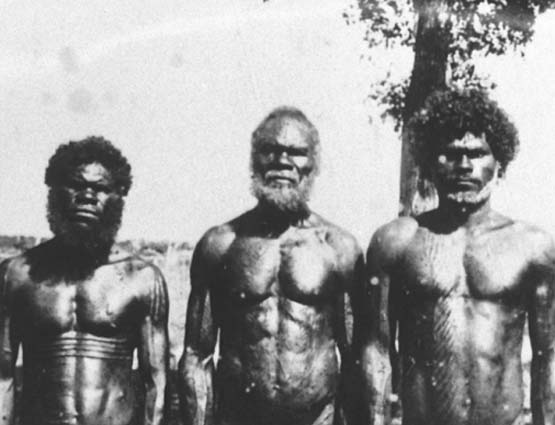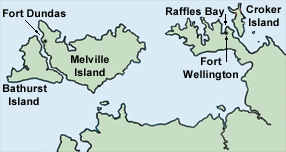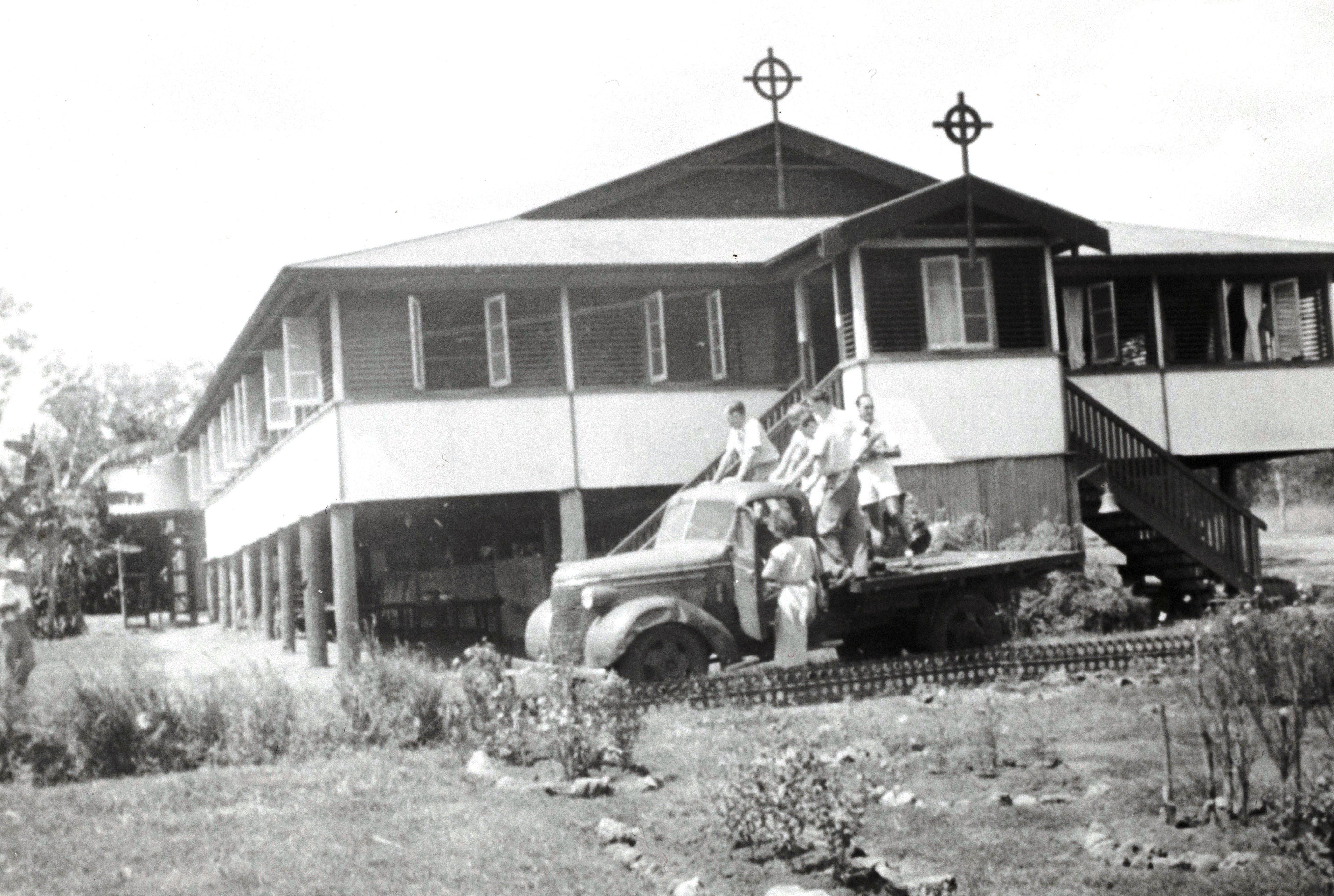|
Melville Island (Northern Territory)
Melville Island ( Tiwi: ''Yermalner'') is an island in the eastern Timor Sea, off the coast of the Northern Territory, Australia. Along with Bathurst Island and nine smaller uninhabited islands, it forms part of the group known as the Tiwi Islands, which are under the jurisdiction of the Northern Territory in association with the Tiwi Land Council as the regional authority. History Indigenous people have occupied the area that became the Tiwi Islands for at least 40,000 years. It is said that the first European to sight the island was Abel Tasman in 1644. Explorer Phillip Parker King (son of governor of New South Wales Philip Gidley King) named it for Robert Dundas, 2nd Viscount Melville, first Lord of the Admiralty, who is also commemorated by the much larger Melville Island in the Canadian Arctic Archipelago. Shortly after this, the British made the first attempt to settle Australia's north coast, at the short-lived Fort Dundas on Melville Island. The settlement lasted fro ... [...More Info...] [...Related Items...] OR: [Wikipedia] [Google] [Baidu] |
Bathurst Island (Northern Territory)
Bathurst Island (Iwaidja: ''Nguyu'') (, ) is one of the Tiwi Islands in the Northern Territory off the northern coast of Australia along with Melville Island. __TOC__ Description The largest settlement on Bathurst is Wurrumiyanga (known as Nguiu until 2010), in the south-east, with a population of around 1,560. Located on the south east corner of Bathurst Island, Wurrumiyanga is approximately north of Darwin. The second largest settlement is Wurakuwu, with a population of 50, located northwest of Wurrumiyanga. The third settlement on the island is a small family outstation called ''4 Mile Camp'', about west of Wurrumiyanga. History Aboriginal Australians have occupied the area that became the Tiwi Islands for at least 40,000 years. On 5 May 1623, Willem Jootszoon Van Colster (or Coolsteerdt), in the ship ''Arnhem'' named the island De Speult Eylandt, in honour of Herman van Speult, Governor of Ambon, who had commissioned the voyage of exploration. In 1828, the i ... [...More Info...] [...Related Items...] OR: [Wikipedia] [Google] [Baidu] |
Fort Dundas
Fort Dundas was a short-lived British settlement on Melville Island between 1824 and 1828 in what is now the Northern Territory of Australia. It was the first of four British settlement attempts in northern Australia before Goyder's survey and establishment of Palmerston, now known as Darwin. The three later attempts were at Fort Wellington, Port Essington and Escape Cliffs. Establishment Captain J. J. Gordon Bremer set sail on from Port Jackson on the 24 August 1824 to colonise the northern part of Australia. His ship was accompanied by , and . The ships transported Captain Maurie Barlow, Lieutenant John Septimus Roe, Lieutenant Everard and 23 men of the 3rd Regiment, a subaltern and 26 men of the Royal Marine, a surgeon, three commissariat workers, three free men seeking adventure and 44 convicts. The construction of a settlement began upon arrival on 27 September 1824. It was officially proclaimed on 21 October 1824, on Trafalgar Day. It was named Fort Dundas and was n ... [...More Info...] [...Related Items...] OR: [Wikipedia] [Google] [Baidu] |
Stolen Generations
The Stolen Generations (also known as Stolen Children) were the children of Australian Aboriginal and Torres Strait Islander descent who were removed from their families by the Australian federal and state government agencies and church missions, under acts of their respective parliaments. The removals of those referred to as "half-caste" children were conducted in the period between approximately 1905 and 1967, although in some places mixed-race children were still being taken into the 1970s. Official government estimates are that in certain regions between one in ten and one in three Indigenous Australian children were forcibly taken from their families and communities between 1910 and 1970. Emergence of the child removal policy Numerous 19th and early 20th-century contemporaneous documents indicate that the policy of removing mixed-race Aboriginal children from their mothers related to an assumption that the Aboriginal peoples were dying off. Given their catastrophic popu ... [...More Info...] [...Related Items...] OR: [Wikipedia] [Google] [Baidu] |
Outstation (Aboriginal Community)
An outstation, homeland or homeland community is a very small, often remote, permanent community of Aboriginal Australian people connected by kinship, on land that often, but not always, has social, cultural or economic significance to them, as traditional land. The outstation movement or homeland movement refers to the voluntary relocation of Aboriginal people from towns to these locations. The outstation movement A movement arose in the 1970s and continued through the 1980s which saw the creation of very small, remote settlements of Aboriginal people who relocated themselves from the towns and settlements where they had been settled by the government's policy of assimilation. It was "a move towards reclaiming autonomy and self-sufficiency". Also known as "homelands", the term "outstation" was adopted as it "suggests a dependent relationship between the outstation and the main homestead, but with a degree of separation". Outstations were created by Aboriginal people who "sought ... [...More Info...] [...Related Items...] OR: [Wikipedia] [Google] [Baidu] |
Pirlangimpi
Pirlangimpi, formerly Garden Point, is a populated place on Melville Island (Australia), Melville Island in the Northern Territory, Australia. History Pirlangimpi lies from the site of the first British settlement in northern Australia, the short-lived Fort Dundas. The present settlement, then called Garden Point, was established in 1937 as a police post, because of concerns about the activities of Japanese luggers. From 1937, "incorrigible natives" (Aboriginal Australians, Aboriginal people) had been sent to Garden Point from Darwin, Northern Territory, Darwin to be supervised by a "Control Officer". Garden Point Mission In 1939 the newly-established Native Affairs Branch started negotiations with various mission station, missions to assume responsibility for those children considered to be "half-caste" (part-Aboriginal Australian, Aboriginal) currently in the government Aboriginal reserve, reserves at Kahlin Compound in Darwin and The Bungalow in Alice Springs. It was decid ... [...More Info...] [...Related Items...] OR: [Wikipedia] [Google] [Baidu] |
Tropical Climate
Tropical climate is the first of the five major climate groups in the Köppen climate classification identified with the letter A. Tropical climates are defined by a monthly average temperature of 18 °C (64.4 °F) or higher in the coolest month, and feature hot temperatures all year-round. Annual precipitation is often abundant in tropical climates, and shows a seasonal rhythm but may have seasonal dryness to varying degrees. There are normally only two seasons in tropical climates, a wet (rainy / monsoon) season and a dry season. The annual temperature range in tropical climates is normally very small. Sunlight is intense in these climates. There are three basic types of tropical climates within the tropical climate group: tropical rainforest climate (Af), tropical monsoon climate (Am) and tropical wet and dry climate or tropical savannah (Aw for dry winters, and As for dry summers), which are classified and distinguished by the precipitation and the precipitation lev ... [...More Info...] [...Related Items...] OR: [Wikipedia] [Google] [Baidu] |
Tasmania
) , nickname = , image_map = Tasmania in Australia.svg , map_caption = Location of Tasmania in AustraliaCoordinates: , subdivision_type = Country , subdivision_name = Australia , established_title = Before federation , established_date = Colony of Tasmania , established_title2 = Federation , established_date2 = 1 January 1901 , named_for = Abel Tasman , demonym = , capital = Hobart , largest_city = capital , coordinates = , admin_center = 29 local government areas , admin_center_type = Administration , leader_title1 = Monarch , leader_name1 = Charles III , leader_title2 = Governor , leader_name2 ... [...More Info...] [...Related Items...] OR: [Wikipedia] [Google] [Baidu] |
List Of Islands By Area
This list of islands by area includes all islands in the world larger than and most of the islands over , sorted in descending order by area. For comparison, four very large continental landmasses are also shown. Continental landmasses Continental landmasses are not usually classified as islands despite being completely surrounded by water. However, because the definition of continent varies between geographers, the Americas is sometimes defined as two separate continents while mainland Australia is sometimes defined as an island as well as a continent. Nevertheless, for the purposes of this list, mainland Australia along with the other major landmasses have been listed as continental landmasses for comparison. The figures are approximations and are for the four major continental landmasses only. The artificial Panama and Suez canals are disregarded, as they are not natural waters that separate the continents. Islands Islands and greater Islands Islands Islands Is ... [...More Info...] [...Related Items...] OR: [Wikipedia] [Google] [Baidu] |
Arnhem Land
Arnhem Land is a historical region of the Northern Territory of Australia, with the term still in use. It is located in the north-eastern corner of the territory and is around from the territory capital, Darwin. In 1623, Dutch East India Company captain Willem Joosten van Colster (or Coolsteerdt) sailed into the Gulf of Carpentaria and Cape Arnhem is named after his ship, the ''Arnhem'', which itself was named after the city of Arnhem in the Netherlands. The area covers about and has an estimated population of 16,000, of whom 12,000 are Aboriginal and Torres Strait Islander people. Two regions are often distinguished as East Arnhem (Land) and West Arnhem (Land), and North-east Arnhem Land is known to the local Yolŋu people as Miwatj. The region's service hub is Nhulunbuy, east of Darwin, set up in the early 1970s as a mining town for bauxite. Other major population centres are Yirrkala (just outside Nhulunbuy), Gunbalanya (formerly Oenpelli), Ramingining, and Maningrida. ... [...More Info...] [...Related Items...] OR: [Wikipedia] [Google] [Baidu] |
Cobourg Peninsula
The Cobourg Peninsula is located east of Darwin in the Northern Territory, Australia. It is deeply indented with coves and bays, covers a land area of about , and is virtually uninhabited with a population ranging from about 20 to 30 in five family outstations, but without any notable settlement or village. It is separated from Croker Island in the east by Bowen Strait, which is wide in the south and up to in the north, and long. In the west, it is separated from Melville Island by Dundas Strait. From Cape Don, the western point of the peninsula, to Soldier Point in the east of Melville Island, the distance is . In the north is the Arafura Sea, and in the south the Van Diemen Gulf. The highest elevation is Mount Roe in the south with an altitude of . Development All of Cobourg Peninsula is part of Garig Gunak Barlu National Park, which also encompasses a few nearshore islands. Mostly a tourist attraction, it is known for its pristine wilderness. It is home to a large var ... [...More Info...] [...Related Items...] OR: [Wikipedia] [Google] [Baidu] |
Darwin, Northern Territory
Darwin ( ; Larrakia: ) is the capital city of the Northern Territory, Australia. With an estimated population of 147,255 as of 2019, the city contains the majority of the residents of the sparsely populated Northern Territory. It is the smallest, wettest, and most northerly of the Australian capital cities and serves as the Top End's regional centre. Darwin's proximity to Southeast Asia makes the city's location a key link between Australia and countries such as Indonesia and East Timor. The Stuart Highway begins in Darwin, extends southerly across central Australia through Tennant Creek and Alice Springs, concluding in Port Augusta, South Australia. The city is built upon a low bluff overlooking Darwin Harbour. Darwin's suburbs begin at Lee Point in the north and stretch to Berrimah in the east. The Stuart Highway extends to Darwin's eastern satellite city of Palmerston and its suburbs. The Darwin region, like much of the Top End, experiences a tropical climate with a wet a ... [...More Info...] [...Related Items...] OR: [Wikipedia] [Google] [Baidu] |
Snake Bay Patrol
The Snake Bay Patrol was an auxiliary reconnaissance unit made up of Indigenous Australian residents of Melville Island in the Northern Territory that was raised by the Royal Australian Navy during World War II. After the first bombing raid on Darwin in 1942, special units consisting of Indigenous Australians were formed, one of which was the Snake Bay Patrol. The Snake Bay Patrol unit was established by Royal Australian Naval Volunteer Reserve officer Lieutenant J.W.B. Gribble during the Pacific War to detect any Japanese forces which landed on the island, with local Indigenous Australians being informally recruited and never formally enlisted into the military. The Patrol's 35 members served on a full-time basis, received firearms training, were issued naval uniforms and held naval ranks conferred by Gribble, but were not paid. Similar units were raised on Bathurst Island, the Cox Peninsula and Groote Eylandt. During the war the Snake Bay Patrol conducted patrols along the shore ... [...More Info...] [...Related Items...] OR: [Wikipedia] [Google] [Baidu] |







.jpg)